English Vocabulary in Use Elementary with Answers and CD-ROM
The audience
This textbook is targeted at students with English skills at the “A1-A2 levels of the Council of Europe scale” (McCarthy & O’Dell, 2010, p. 7). The learners should be capable of both understanding and communicating straightforward information regarding familiar situations in everyday contexts.
It could be used by independent learners or as part of a classroom curriculum. It is not suitable for students taking their first steps with the English language.
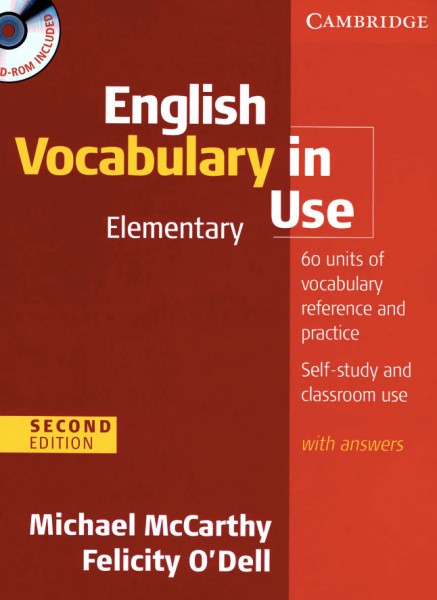
The Content
The textbook consists of sixty chapters divided between contextual situations, verbs and grammar usage. It includes an answer key and guides regarding phonemic symbols, irregular verbs and vocabulary development. This 2010 edition of the textbook came with an interactive CD-ROM and rectified some issues present in the 1999 publication.
The contextual situations that form the focus of chapters 1 to 35 include authentic examples of language use relating to people, the home, school, workplace, leisure time, countries, animals, travel, social issues and the like. Chapters 36 to 60 cover grammatical topics such as verbs, adjectives, prefixes, suffixes, prepositions and so on.
The review copy of the book did not include the CD-ROM. An online review indicated that the CD-ROM incorporated games, practice exercises, audio recordings, tests and a dictionary.
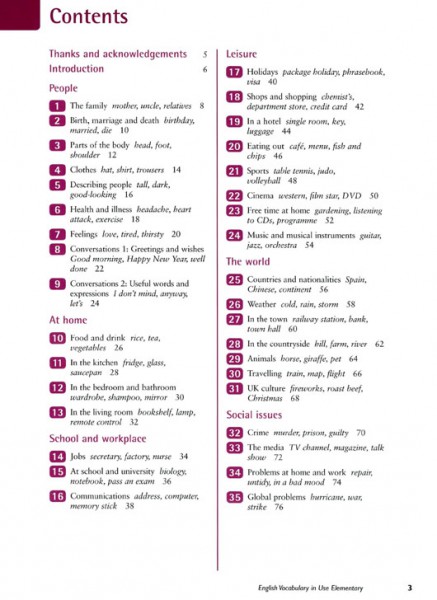
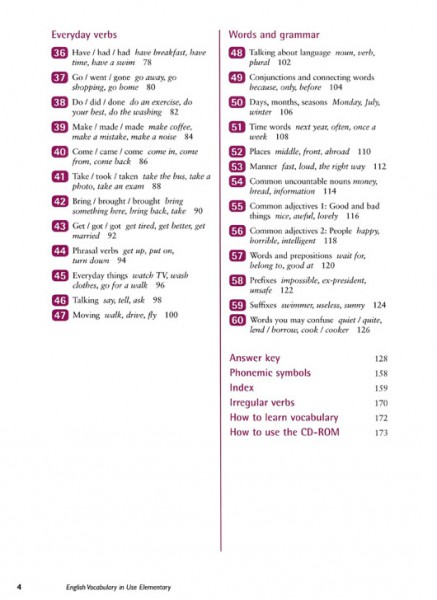
The approach
This textbook is quite traditional. Each chapter consists of two pages that follow a specific pattern with little variation. The first page sets out examples and illustrations of the new vocabulary while the second provides a range of exercises designed to reinforce and test the newly acquired knowledge. This structure provides a measure certainty for some yet tedium for others. The page layout is conventional albeit cluttered.
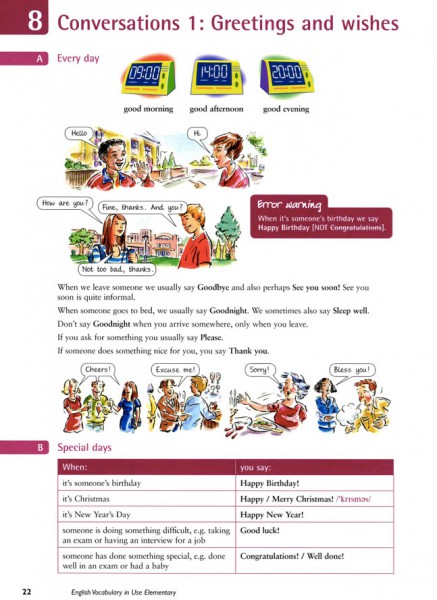
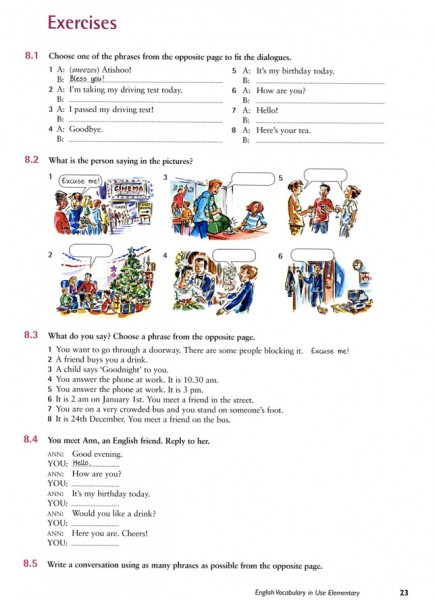
Chapter 8, for example, deals with greetings and wishes. Illustrations display examples of related expressions used at different times of the day, when meeting people, when being polite and so on. A few rules of thumb that should be applied when greeting people are also described.
On the following page simple exercises that require the user to fill in the blanks, label images and match expressions are provided. The final exercise requires the student to delve a little deeper into their knowledge and skill sets as they are instructed to compose a conversation demonstrating understanding of their newly acquired vocabulary.
The graphics illustrate authentic situations however their style is a little dated in my view. Other chapters also include tips and error warnings regarding grammar and conversation.
Application and conclusion
This textbook could act as a scaffold for an English language curriculum however it would need to be augmented with teacher-generated activities and materials that introduce greater engagement, authenticity and conversation within the classroom.
The book lacks variety in its approach and may not captivate all students. It could certainly act as the basis for additional study outside of the classroom for those students that like to revise their knowledge and understanding in a prescribed manner. I believe its value lies in its capacity to provide structure for new teachers of English as a second language and students that prefer a structure approach with the learning and revision.
References
McCarthy, M., & O’Dell, F. (2010). English Vocabulary in Use Elementary with Answers and CD-ROM. Cambridge, UK: Cambridge University Press.
British Council (2016). Our Levels and the CEFR. Retrieved April 4, 2016, from https://www.britishcouncil.pt/en/our-levels-and-cefr
EnglishTips (2016). English Vocabulary in Use Elementary ( Book, Test Book, CD ROM). Retrieved April 4, 2016, from http://englishtips.org/1150839254-english-vocabulary-in-use-elementary-book-test.html








Recent Comments